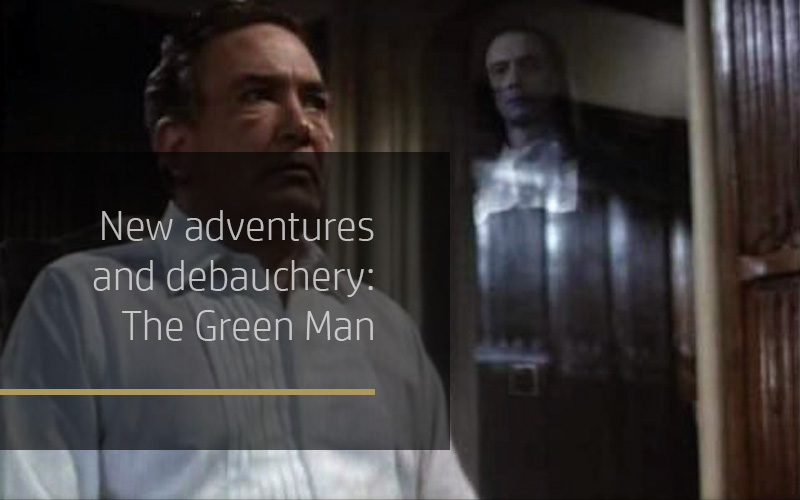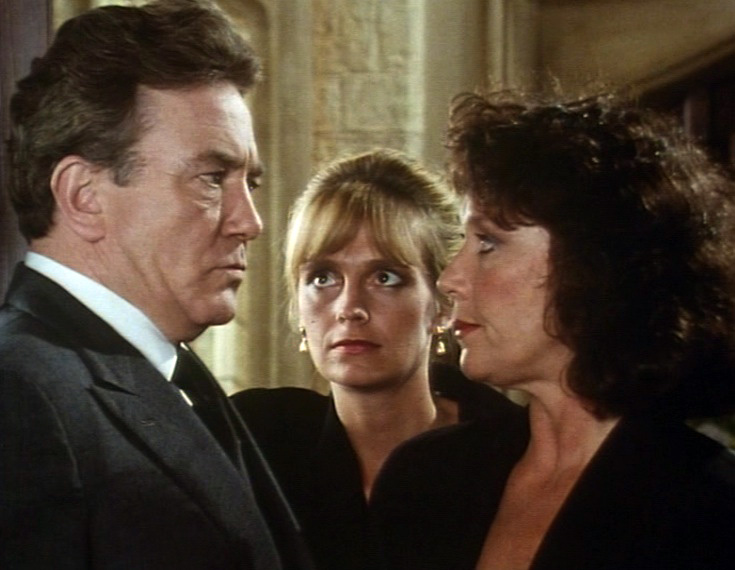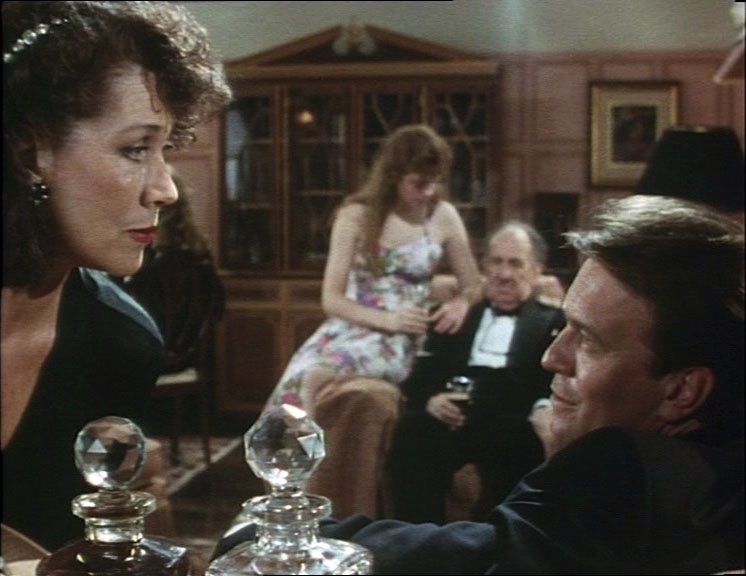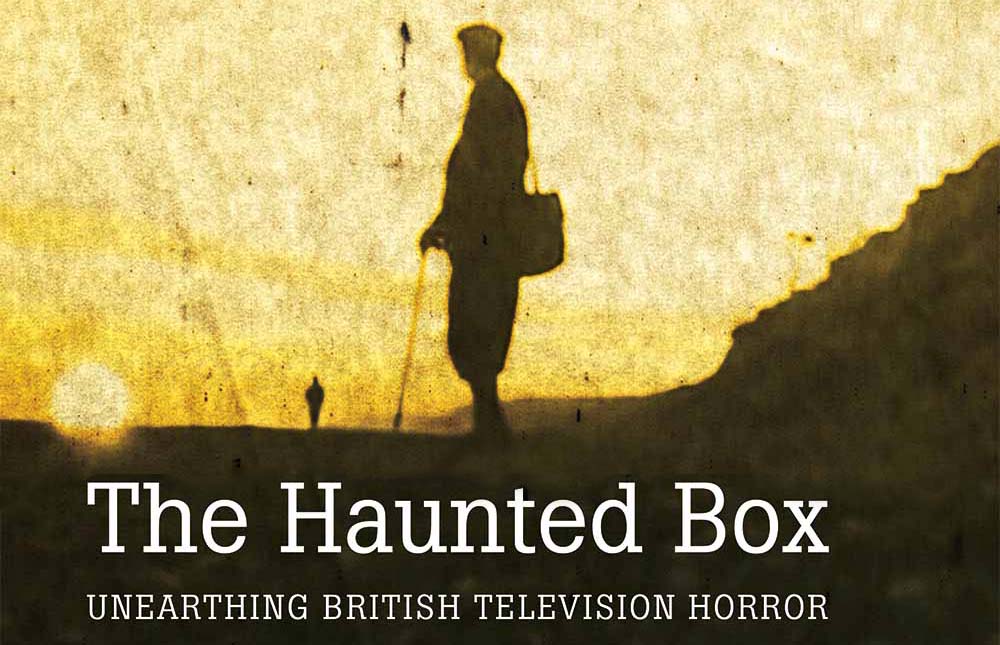
New Adventures And Debauchery: The Green Man
The Green Man
∼∼∼
Episodes: 3 x 50 minutes
∼∼∼
Albert Finney (Maurice)
Linda Marlowe (Joyce)
Sarah Berger (Diana)
Nicky Henson (Jack)
Josie Lawrence (Lucy)
Michael Grandage (Nick)
Natalie Morse (Amy)
Michael Culver (Underhill)
Robert Schofield (David)
Michael Hordern (Gramps)
Nickolas Grace (Sonnenschein)
∼∼∼
Director Elijah Moshinsky
Writers Malcolm Bradbury, Based on the novel by Kingsley Amis
Producers Michelle Mendoza, David Snodin
Production company A&E Television Productions for the BBC
∼∼∼
Air dates 28 October to 11 November 1990, BBC1
PRODUCED BY THE BBC and screened in 1990, this three-part mini-series revolves around Maurice, who runs The Green Man hotel and restaurant somewhere outside Cambridge, with his wife Joyce. Michael Hordern plays ‘Gramps’, who dotes on Maurice’s daughter, Amy, and is his usual perfect mix of cantankerousness and amiability. Maurice is in his element running The Green Man, quaffing glasses of wine at every opportunity and playing the ebullient host. Guests are regularly regaled with tales of the hotel ghosts, one of whom becomes all too evident to Maurice. It’s based on Kingsley Amis’s 1969 novel of the same name, and adapted for TV by academic and screenwriter Malcolm Bradbury.

Evocative of an M.R. James story
Maurice’s quest to determine the identity of his ghost leads him, in a plot that’s nicely evocative of an M.R. James story, to the Cambridge university library where he uncovers the diaries of Thomas Underhill, a seventeenth-century cleric who once lived in the house. Underhill, by employing ‘alchemical’ powers, conjured up visions of ‘carnally consorting couples’ for the entertainment of the pre-pubescent girls he brought to the house in order to rape them. Maurice seems relatively unconcerned by this rather unsavoury aspect of Underhill’s life, instead appearing to see him as a kindred spirit in continual search of new adventures and debauchery. Underhill’s magic becomes a potential route for Maurice to realise his own sexual desires – until the third instalment of the series when his one-track mind is thrown nauseatingly off-course by one of Underhill’s visions.

Unlikeable characters
Though entertaining, many of the characters are distinctly unlikeable and some stereotyped to the point of parody. Maurice cavorts around his hotel in evening dress, an all too present host who seems unable to leave his long-suffering staff to get on with their work in peace. Both Maurice and wife Joyce, and their friends Jack and Diana, are continually engaged in blatant flirtation when they’re not making snide comments about one another. Gramps very disappointingly dies within mere minutes, removing the wonderfully bumbling Hordern from the equation, but there is some compensation in the shape of vicar Sonnenschein, who – living up to his surname – accessorises his vestments with Hawaiian shirts. At social functions he knocks back glasses of Bacardi and coke (or Bacardi and Pernod) and seems at best mildly doubtful of his spiritual convictions (“Immortality’s been pretty much done to death, don’t you think?”).
A selection of The Green Man book covers.
Maurice has to “knock it off a bit”
The unlikely alliance between Maurice and his daughter in law, Lucy, is a neat touch. Lucy becomes Maurice’s only real confidante, proffering herbal tea and advising him that he should attempt to meet Underhill ‘in person’. Joyce and Jack, in contrast, are disbelieving, putting Maurice’s visions of Underhill down to the drink. Jack, a doctor, advises Maurice to “knock it off a bit”, and the suggestion that Maurice’s visions are the result of delirium tremens stops the series getting a bit too schlocky. We are cleverly left wondering whether the poorly animated bat that attacks Maurice in his bathroom is a result of one too many whiskies or another of Underhill’s alchemical visions. (Maurice’s whimpering after this incident is, incidentally, surely a homage to Hordern’s performance in the Omnibus adaptation of M.R. James’s Whistle and I’ll Come To You.)
It’s very entertaining, well-paced, and just the right mix of humour and the supernatural, but the Green Man mythology is never fully explained. Sure, ‘the Green Man’ puts in an unsettling and surprisingly dapper appearance, but this is an old-fashioned ghost story rather than a deep exploration of religious mythology. The sequences in the woods behind the hotel are more Evil Dead than Robin Redbreast. The connection between Underhill and the Green Man – and quite how Green Man mythology is being employed – is under-articulated. Ultimately, though, it doesn’t matter: the central point is Maurice’s mid-life struggle between a life of debaucherous revelry and just settling down a bit (neatly symbolised by a Green Man icon dug up from Underhill’s grave and a simple silver cross). In any case I’m loathe to dismiss The Green Man too quickly. A day after re-watching it for this piece, I walked into a local charity shop and immediately greeting me on the bookshelf was the same edition of Amis’s 1986 novel The Old Devils that sits next to Maurice’s bathtub.

Jennifer Wallis
Like this article?
Related Posts
Comments
Copyright © Headpress

